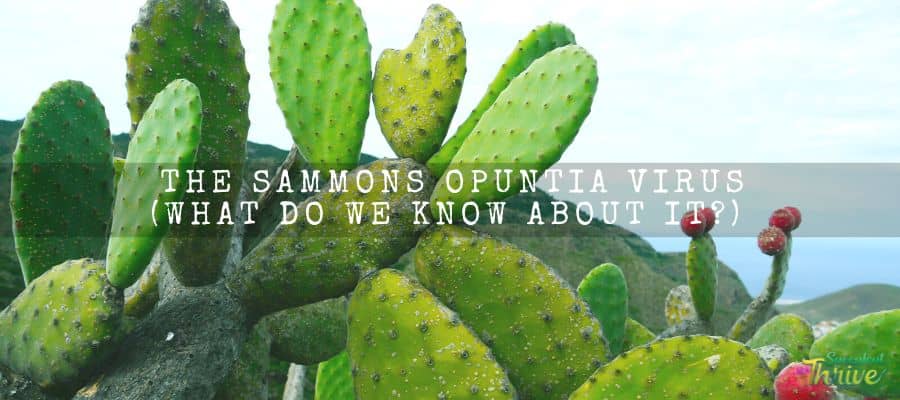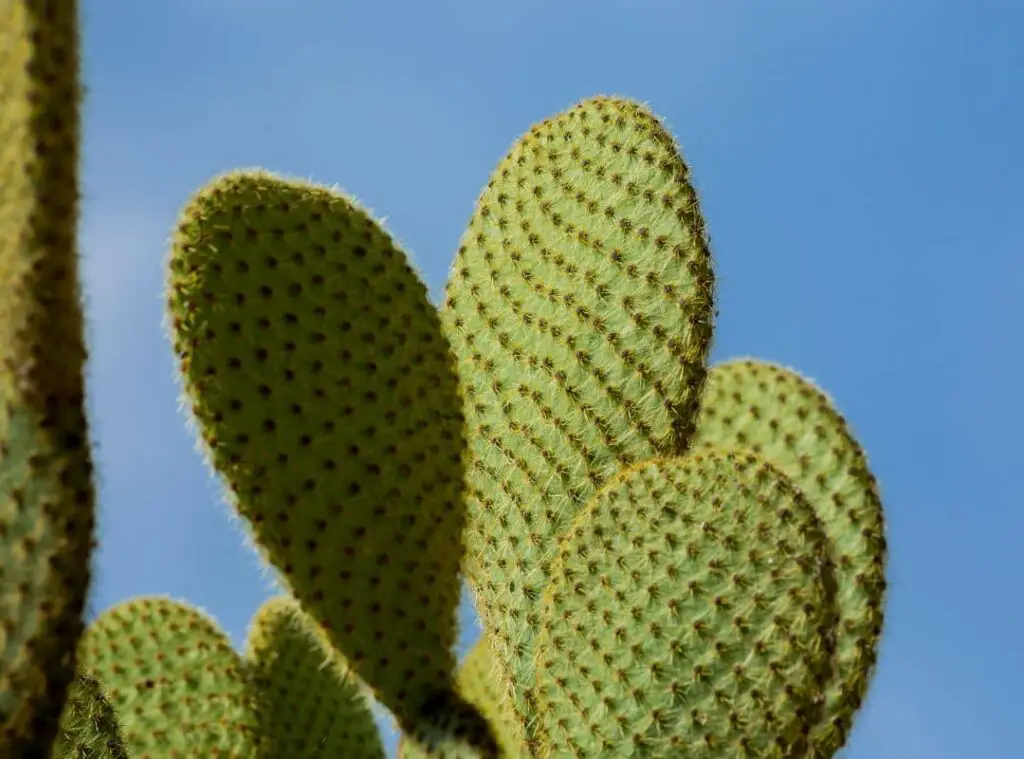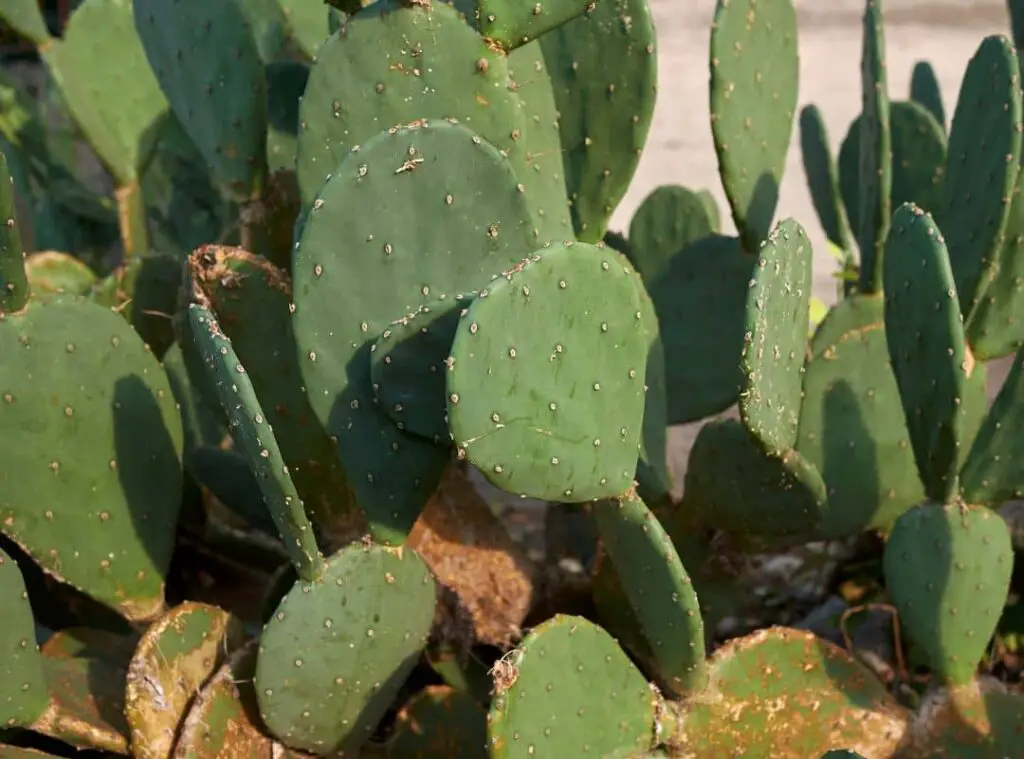The Sammons Opuntia Virus (SoV) was first identified in 2001 by researchers at the US Department of Agriculture who were analyzing symptoms present on common prickly pear cactus. The virus is native to Australia and has historically affected the opuntia species naturally found there.
However, since being introduced to the United States as an ornamental plant in the late 1800s or early 1900s, opuntia species have steadily spread, becoming a threat to native species and cultivated varieties alike. Of all of the identified SoV strains, Pcv1 is extremely hindered due to its inability to infect opuntia stricta, however it can still infect many other opuntia species.

How to identify Sammons opuntia virus
Sammons opuntia virus could be visible in light yellow rings which would usually appear on the cactus pads. This characteristic has inherited the common name called ringspot virus. However, bear in mind that this virus does not have any fatal outcome on the plants (most of the time).
If I briefly explain on the opuntia plants, they are commonly known as prickly pear cactus. These cacti are endemic to Mexico. Having said that you could spot them commonly in USDA zones 9 through 11. They would usually attain a maximum height of 6-20 feet.
Occasionally Opuntia plants may experience these diseases and Sammons opuntia virus is one of the most commonly spotted conditions.
If I further elaborate on this, the ringspot virus or the Sammon’ s virus parches would arise in light yellow as aforesaid. Furthermore, they would tend to form a target shaped pattern of general mottling as well. Thankfully they would not impact the vigor or on the health of the plants.

How to treat Sammons opuntia virus
There are no ways you can treat the Sammons virus. As aforesaid, Sammons virus do not bring any negative impact on the plants. Due to that you do not have to panic whenever you come across this condition.
Opuntia plants are the usual host plants for the Sammon’ s virus. Insects do not spread this condition. However, the formation of the Sammon’ s virus happens from the plant’s sap. Further, it would spread among the plants mainly due to human intervention.
Sammons Opuntia virus infects cacti in the wild, and can be spread by brushes, shovels, picks, and other tools. The extreme summer heat can also cause blistering on the cactus skin. Due to the nature of this virus it is usually fatal.
There is no cure; so if you are working with cactus in areas where it may be present, make sure to use plastic tools, never touch the plant with your bare hands and wash your hands thoroughly before eating or smoking. This is a very common disease among Sonoran Desert plants such as cholla and prickly pear.
So, try to avoid going through this condition, you need to always use healthy looking cactus pads for the propagation. Ideally you need to use cactus pads which do not come up with any sign of disease. If your plants have gone through this condition you could get rid of the infected plants and start growing the plants fresh.

Other Opuntia viruses
There are a few Opuntia diseases which you can commonly come across when growing the plants. Having said that it is quite important that you identify which viral infection has caused your beloved cactus and act smart to rectify it. As aforesaid, Sammons virus is not an alarming condition at all.
It would only make the plant look a little strange. However, if you are a commercial grower, this condition impact you economically. One might find a cactus going through this condition interesting as well. However, I recommend that you avoid it at all costs.
Apart from Sammon’ s virus, chances are that Opuntia plants may go through Phytoplasmas infections too. Phytoplasma occurs due to a small bacteria and those plants would also tend to develop the same symptoms as the Sammon’ s virus does.
Conclusion
Sammons opuntia virus, also known as SoV, can cause damage to the leaves and stems of prickly pear cactus. Although most cases of SoV aren’t serious, some outbreaks have caused widespread damage in native habitats.
Large-scale die-offs of feeding caterpillars have been observed in the Solano Beach area near San Diego, CA. Recovery is slow, but can occur if the insect population is kept under control.
Read Next : Why Does Cactus Split? 10 Minutes Quick Read
